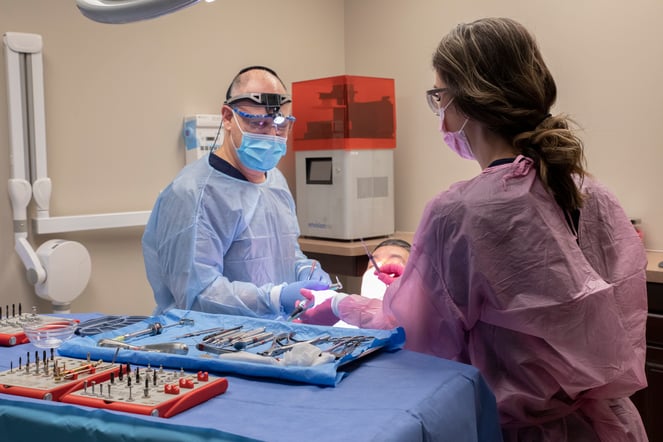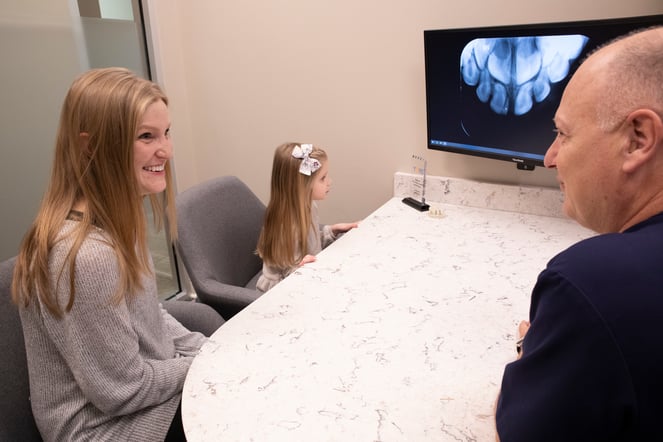The Basics of Dental Implants
The dental implant is placed into the jawbone and heals through a process called osseointegration, usually within 2-5 months. “Osseo” refers to bone and “integration” refers to accepting the implant as part of the bone.
The beauty of a dental implants is that they look, act and function as a natural tooth.

Installing Dental Implants
In some cases, a tooth can be removed and the dental implant placed at the same time, or, a tooth might already be missing and an implant be ready for immediate placement. In those scenarios, there is typically one procedure with two follow-up visits, and then one or two more visits to make and deliver the crown, bridge or final teeth. In other situations, the tooth needs to be removed and time allowed for the site to heal – usually 2 to 6 months – and then the implant will be placed.If a tooth is already missing but inadequate bone is present, bone grafting might be completed and the implant placed after the graft heals, typically in 3 to 5 months. In those scenarios, two procedures are completed with follow-up appointments, followed by delivery of the crown, bridge or final teeth.
In cases where a full arch of teeth needs removal or are missing, the dental implants and a full arch of non-removable temporary teeth may be placed all in one procedure, in just one day. There will be a couple of preliminary visits to prepare, and some follow-up appointments to make the final bridge.
It is important to realize that, like any medical or surgical procedure, not everything works 100% of the time. Fortunately, research and data have shown that the success rate of dental implants is 94-96% in the upper jaw and 96-98% in the lower jaw. There are very few medical and dental procedures that enjoy such high success rates.
Total implant treatment times are usually 3 to 6 months from start to finish. In some cases, treatment may be as little as 10 weeks, and in other cases, treatment may take up to one year. When desired, especially in the front teeth, a temporary tooth may be provided while the dental implant is healing.

Maintenance of Dental Implants
Dental implants will never develop decay or need a root canal, but they do need healthy teeth and gums for long-term success. With good medical and dental health, dental implants may last a lifetime.
Of all dental techniques and procedures offered in dentistry, dental implants generally have the most favorable prognosis. With some restorations, there may be noticeable wear and tear or staining over time. It’s possible that the restoration on the implants – the crown or bridge placed – may need repair or replacement at some time in the future.
Taking good care of dental implants is vital to making them last and is the same as caring for natural teeth. Brushing, flossing, and irrigating with water is a must. It’s important for patients to practice good dental hygiene and to see their dentist on an ongoing basis. Dentists use special instruments when cleaning implants to avoid damaging them.
While this gives a good overview of dental implants and how they are installed and maintained, the most important thing is that we make sure they're the right option for you.
Contact my team so we can make a personalized treatment plan just for you.
This blog post is based on an excerpt from Dr. Scott Frank's chapter in the book, "A Reason to Smile: Fixing Broken Confidence with Cosmetic Dentistry."



